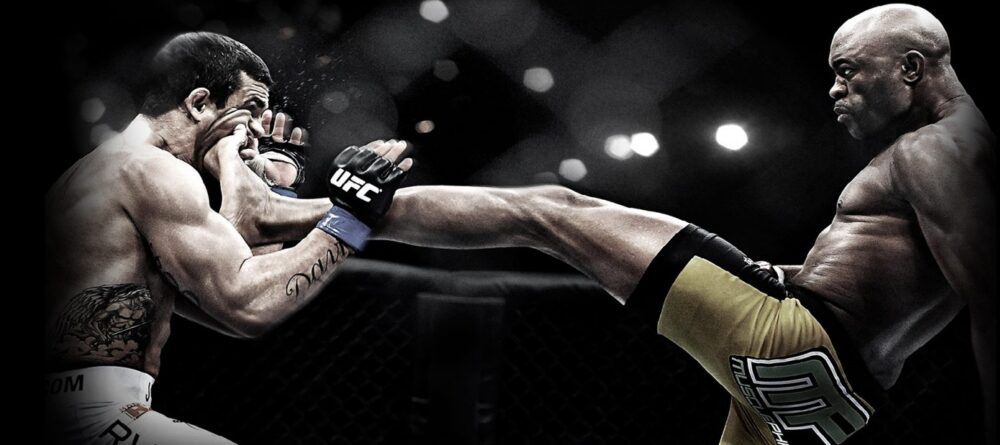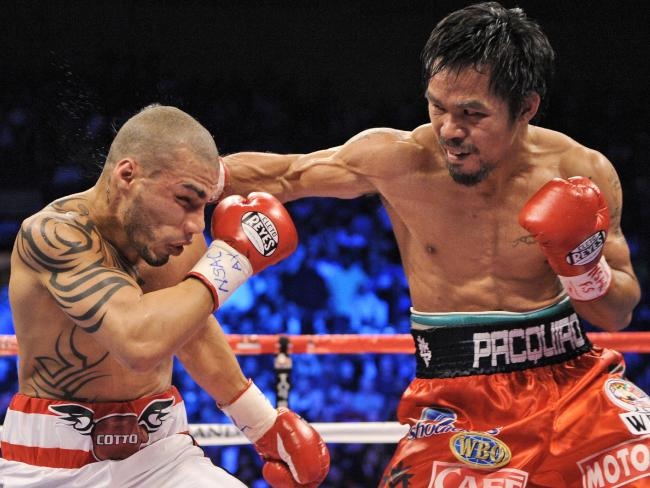There are many boxing fans that marvel at a fighter when they see the Shoulder Roll or Philly Shell Defense. It has to be the most popular self defense move of all time; as far as boxing is concerned.
Is it the most effective defense for a fighter? Well, it all depends on who you ask. If it was the best form of defense against punches then every fighter would be using it, and that’s just not the case.
The truth is up until Floyd Mayweather Jr. retired, he was pretty much the only fighter using it predominantly.
Other fighters of his era have used it a bit, but not as dominant as he has. Floyd has truly perfected the shoulder roll, and has made it as famous as it is today.
In this article I will use the words Philly Shell and Shoulder Roll interchangeably, because they both incorporate the same moves. Depending on who you are, you’ll use one name over the other, or use both names.
How To Throw An Overhand Right
Who Invented The Shoulder Roll – Philly Shell?
The Philly Shell or shoulder roll is not linked to a single creator. Some of the old school fighters use to use it as a defensive move.
This is why you saw a few old fighters use it around the same time as each other, because it was being taught in a few gyms at that time.
The move has grown in many forms to what it is today. Below are a list of boxers, from old school to new school, that has used the shoulder roll predominantly throughout their careers.
10 Devastating Knockouts Of 2021
Boxers Who Are Known To Use The Shoulder Roll
Name | Length of Career
- Jersey Joe Walcott (1930-1952)
- Ezzard Charles (1940-1959)
- Archie Moore (1935-1963)
- Charlie Burely (1936-1950)
- George Benton (1949-1970)
- Nicolino Locche (1968-1972)
- Pernell Whitaker (1984-2001)
- Bernard Hopkins (1988-2016)
- James Tony (1988-2017)
- Floyd Mayweather Jr. (1996-2015)
James Tony – Shoulder Roll Perfection
How To Do The Shoulder Roll/Philly Shell
As I stated earlier, the shoulder roll has advanced over the years into what it is today. Below are the steps to take to execute the modern day shoulder roll.
In the regular orthodox fighting stance you want to put your lead hand over your stomach. This hand is going to block and protect punches that are thrown at your ribs, liver, and stomach.
Now take your rear hand and place it diagonally across your solar plexus, but not all the way across. You want it to stop right where your chin is, and tuck it slightly behind your shoulder.
This hand is used to catch the jab, and can also be used to block any left hook that is thrown to the right side of your head.
You want everything to be nice and tight so that when your opponent launches punches towards you, you are able to defend your body from all angles.
The Philly Shell is a great defensive move to protect yourself, and also counter punch your opponent. You have to be able to get in the stance properly, in order to capitalize on this defensive move.
How To Use The Philly Shell
In the previous section I wrote how to get into the stance of the Philly Shell, and briefly went into how to use the stance.
In this section I will expand on how to use the Philly Shell effectively.
The right hand, which is your rear hand, can be used to block several punches.
It can be used to catch the jab, block a hook to the head, or block a hook to the right side of your body using your elbow and forearm.
Your lead shoulder can be used to protect your head and face against a jab from your opponents right hand. What you would do is roll your shoulder with the punch being thrown.
use your shoulder to block the jab, and roll with it. You can do a major roll or a slight roll. It all depends on the type of punch being thrown at you. Is it a right hand jab or a heavy right hand.
The reason why you want to roll with the punch is because it takes off some of the sting of the punch.
As for your lead arm, as I mentioned earlier, it’s used to protect punches from hitting your mid section or side part of your body.
If your opponent throws a jab to the body or a hook to your liver, you can simply use the forearm of your lead hand to block it.
Kickboxing Moves For Beginners
How To Use The Philly Shell
Counterpunch Off The Shoulder Roll
When shoulder rolling you have many options to then counterpunch. I won’t get into any of that today because I actually want to write a part two to this article.
You can shoulder roll and counter with a straight right, you can shoulder roll and counter with a right cross. You can even shoulder roll and counter with a right hand uppercut.
You have many options to counterpunch, and my advise is to take advantage of it. I always tell my students that you simply can’t win a fight using only defense.
Your defense can block punches or make your opponent miss with punches. But in order to have a chance at winning the fight you have to throw punches.
George Benton – Shoulder Roll (Defense Highlight)
Defensive Mastery of Nicolino Locche (Shoulder Rolls and Slips)
Archie Moore’s Superb Defensive Shoulder Roll Style
In conclusion, the Philly Shell/Shoulder Roll is a great defensive move that has been used in boxing for decades.
It’s a move that has been perfected by the likes of Bernard Hopkins, James Tony, and Floyd Mayweather. As I stated earlier Floyd looks like he’s the last fighter to use it as a predominate defensive move.
Floyd has retired and is teaching the Philly Shell to his protégé Gervonta “Tank” Davis, but Davis does not use it much as his main style of defense.
The Philly Shell is good but it should only be used by skilled fighters. I as well as many coaches and trainers agree that we don’t teach this to new fighters as a basic defensive move.
The Philly Shell technique is taught to fighters that have experience, and want to add it to their defensive repertoire. It’s not for new fighters to learn.
The reason being is that it can be a dangerous defensive style to fight with if you don’t know what you’re doing. It really takes years to perfect.
New fighters are not taught this style of defense because it’s not the most effective way to learn how to fight and defend yourself as someone new learning how to box.
But if you have some years of fighting under your belt, and would like to learn it in order to perhaps add it to your skill set, then go right ahead. It won’t hurt!
Shout out to our sponsors of this post: The Money Team
Written By: Jerome Brown
Jerome Brown is an SEO specialist, researcher, and content marketing writer. He’s also a digital content consultant, and runs his own mentorship program for young up and coming writers. When he’s not writing or mentoring he’s enjoying his hobbies, which include martial arts training, attending music festivals, watching sports or reading a good book.

